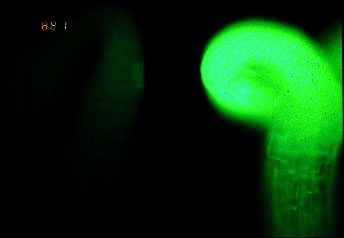

Analysis of Two-Component Signaling Networks
in Arabidopsis
Joe Kieber University of North Carolina, Dept.
of Biology , Chapel Hill, NC 27599
Eric Schaller Dartmouth
College, Dept. of Biological
Sciences , Hanover, NH 03755
Dennis Mathews University of New Hampshire, Dept.
of Plant Biology , Durham, NH 03824
Contact: Joe Kieber | Eric Schaller | Dennis Mathews
|
An NSF-funded 2010 project focused on understanding the function of the two-component signaling network in Arabidopsis Two-component systems are the primary means by which bacteria sense and respond to environmental stimuli. These systems are comprised of a number of distinct elements, namely histidine kinases, response regulators and in the case of phosphorelays, histidine phosphotransfer proteins (HPts). Genetic and molecular studies in Arabidopsis have implicated two-component elements in hormone signaling, red-light perception, circadian rhythms and perhaps osmosensing. This site describes studies focused on these Arabidopsis two-component elements.
|
 
|
The left photo shows the phenotype of etilolated Arabidopsis seedlings grown in air (left seedling) or ethylene (right). The seedling grown in the presence of ethylene adopts a morphology known as the triple response. The receptors for ethylene belong to the histidine kinase family. The right photo shows transgenic seedlings harboring an ARR5 promoter-GFP fusion grown on media without (left seedling) or with cytokinin (right seedling) visualized under UV light.
Some material within these Web pages is based on work supported by the National Science Foundation and the United States Department of Agriculture. Any opinions, findings, and conclusions expressed in this material are those of the author and do not necessarily reflect thoseof the supporting agencies.